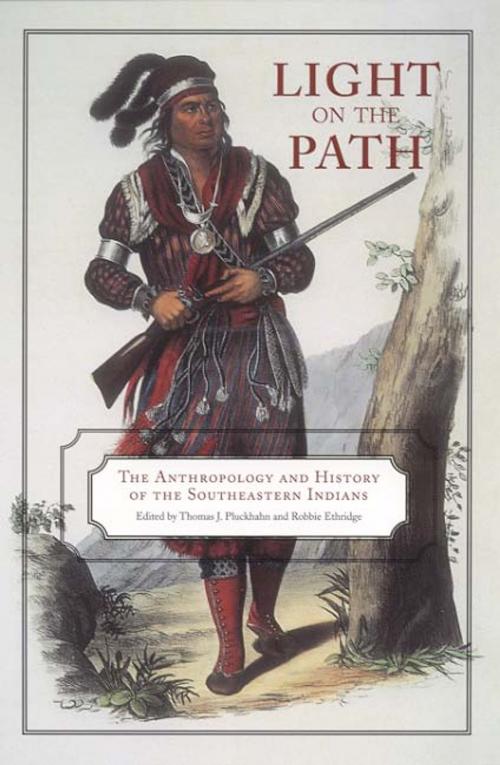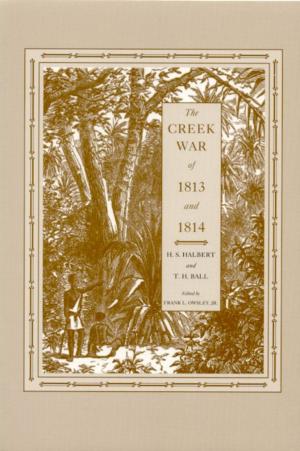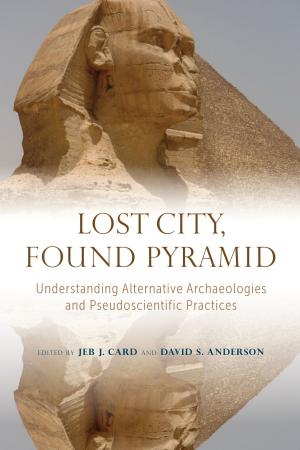Light on the Path
The Anthropology and History of the Southeastern Indians
Nonfiction, Social & Cultural Studies, Social Science, Cultural Studies, Native American Studies, Anthropology| Author: | Adam King, Jerald T. Milanich, Thomas J. Pluckhahn, Marvin T. Smith, Eric E. Bowne, Theda Purdue, Robbie Ethridge, John E. Worth, S. Kowalewski, Steven C. Hahn, Scott Jones, William M. Jurgelski, Mark Williams | ISBN: | 9780817384197 |
| Publisher: | University of Alabama Press | Publication: | September 12, 2009 |
| Imprint: | University Alabama Press | Language: | English |
| Author: | Adam King, Jerald T. Milanich, Thomas J. Pluckhahn, Marvin T. Smith, Eric E. Bowne, Theda Purdue, Robbie Ethridge, John E. Worth, S. Kowalewski, Steven C. Hahn, Scott Jones, William M. Jurgelski, Mark Williams |
| ISBN: | 9780817384197 |
| Publisher: | University of Alabama Press |
| Publication: | September 12, 2009 |
| Imprint: | University Alabama Press |
| Language: | English |
A seamless social history of the native peoples of the American South, bridging prehistory and history.
The past 20 years have witnessed a change in the study of the prehistory and history of the native peoples of the American South. This paradigm shift is the bridging of prehistory and history to fashion a seamless social history that includes not only the 16th-century Late Mississippian period and the 18th-century colonial period but also the largely forgotten--and critically important--century in between. The shift is in part methodological, for it involves combining methods from anthropology, history, and archaeology. It is also conceptual and theoretical, employing historical and archaeological data to reconstruct broad patterns of history--not just political history with Native Americans as a backdrop, nor simply an archaeology with added historical specificity, but a true social history of the Southeastern Indians, spanning their entire existence in the American South.
The scholarship underlying this shift comes from many directions, but much of the groundwork can be attributed to Charles Hudson. The papers in this volume were contributed by Hudson’s colleagues and former students (many now leading scholars themselves) in his honor. The assumption links these papers is that of a historical transformation between Mississippian societies and the Indian societies of the historic era that requires explanation and critical analysis.
In all of the chapters, the legacy of Hudson’s work is evident. Anthropologists, archaeologists, and historians are storming the bridge that connects prehistory and history in a manner unimaginable 20 years ago. While there remains much work to do on the path toward understanding this transformation and constructing a complete social history of the Southeastern Indians, the work of Charles Hudson and his colleagues have shown the way.
A seamless social history of the native peoples of the American South, bridging prehistory and history.
The past 20 years have witnessed a change in the study of the prehistory and history of the native peoples of the American South. This paradigm shift is the bridging of prehistory and history to fashion a seamless social history that includes not only the 16th-century Late Mississippian period and the 18th-century colonial period but also the largely forgotten--and critically important--century in between. The shift is in part methodological, for it involves combining methods from anthropology, history, and archaeology. It is also conceptual and theoretical, employing historical and archaeological data to reconstruct broad patterns of history--not just political history with Native Americans as a backdrop, nor simply an archaeology with added historical specificity, but a true social history of the Southeastern Indians, spanning their entire existence in the American South.
The scholarship underlying this shift comes from many directions, but much of the groundwork can be attributed to Charles Hudson. The papers in this volume were contributed by Hudson’s colleagues and former students (many now leading scholars themselves) in his honor. The assumption links these papers is that of a historical transformation between Mississippian societies and the Indian societies of the historic era that requires explanation and critical analysis.
In all of the chapters, the legacy of Hudson’s work is evident. Anthropologists, archaeologists, and historians are storming the bridge that connects prehistory and history in a manner unimaginable 20 years ago. While there remains much work to do on the path toward understanding this transformation and constructing a complete social history of the Southeastern Indians, the work of Charles Hudson and his colleagues have shown the way.















